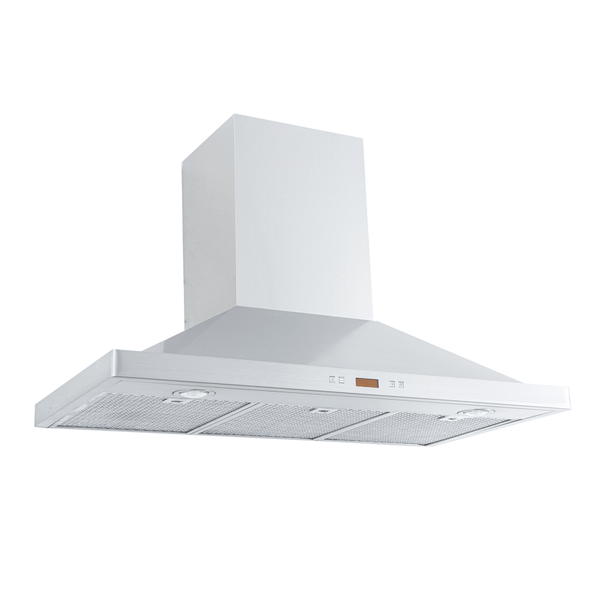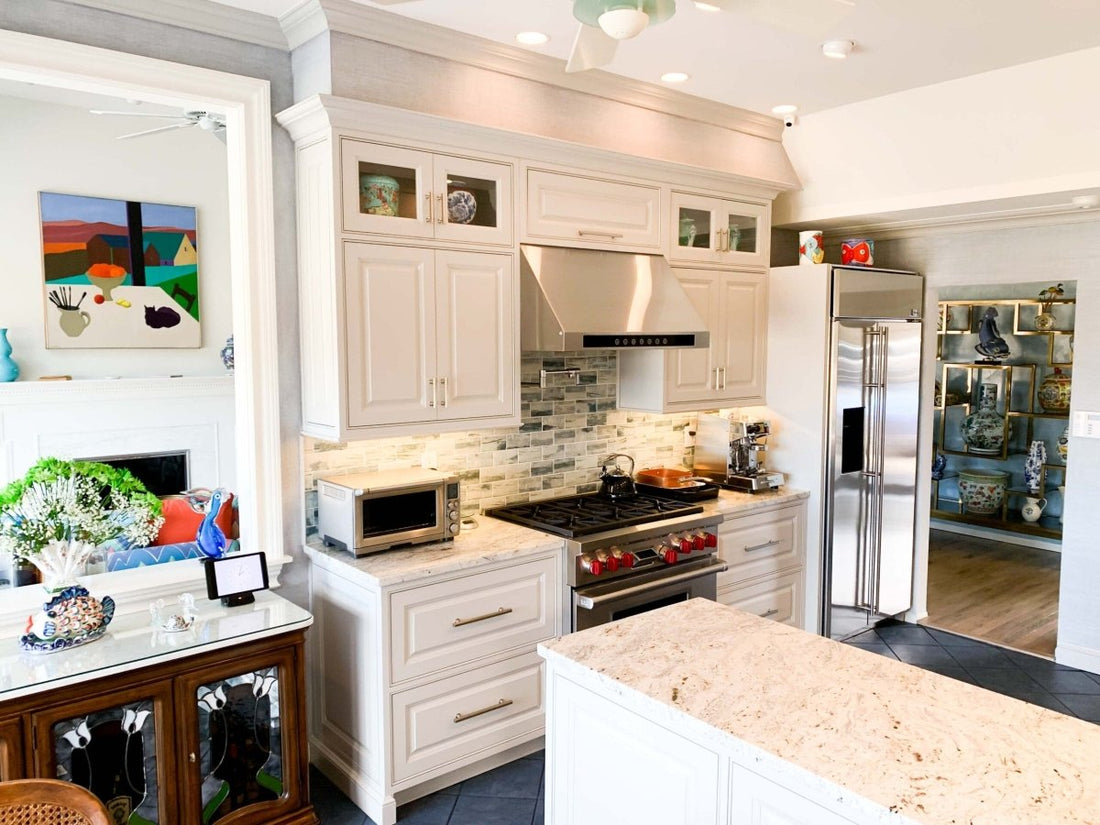Most range hoods or vent hoods are powered by a single motor. Some have two or more. These blower motors suck fumes and cooking exhaust from over your cooktop through ductwork and outside your home (or through charcoal filters with ductless models).
Residential hoods pull up to 2000 CFM, while commercial range hoods can pull up to 5000 CFM or more. They are typically powered with a standard 120-volt outlet or hardwired straight into the kitchen’s electrical system.
What is a range hood?

A range hood is a kitchen appliance that filters smoke and other unwanted contaminants in your kitchen air outside of your home. Residential range hoods come in a variety of CFM ratings. Most residential hoods come in 400-1800 CFM.
But, it’s possible to find range hoods under 400 CFM. Or if you’re an avid cook looking for an incredibly powerful hood, 2000 CFM may be what you’re looking for.
The two most common types are ducted and ductless. Ducted range hoods pull air through ductwork that can run through your wall or ceiling and then outside your home. This is the most effective option in your home since they filter all the grease, dirt, and chemicals in your air outside your home.
Ductless hoods, in contrast, recirculate your kitchen air through some type of filter. It will trap some grease and dirt, but the same air will recirculate inside your home. Ductless hoods work great in apartments, condos, or other living spaces where you can’t install ductwork.
In general, if you cook often or cook a lot of Asian type foods, purchase a ducted hood rather than a ductless model if at all possible.
Basic Components

Blower
The blower powers the range hood. Most range hoods come with a single blower, but a dual blower is common as well. Blowers consist of some protective housing, fan blades, and a motor.
Blower Types
There are three types of blowers: local blower, inline blower, and external blower. A local blower is inside the hood. These blowers are the most common followed by remote blowers.
Remote blowers are installed within your ductwork. These are further from your range hood and thus quieter than local blowers.
The final type of blower is external. Not many choose to install an external blower because of the extra expense, but this type will go outside your home or on your roof.
Controls
Every range hood includes a control panel. Stainless steel push buttons are some of the most common control panels. On professional-quality vent hoods, you’ll also see elegant LED touch panels.
Here are a few of the most common types of controls.
Types
- LED/Halogen light controls
- Heat lamp controls
- Blower speed
- Four-speed, six-speed, or fully adjustable
- Time delay controls
- Clock
- A timer to clean your hood filters
- On/off switch
Filter Types
At Proline Range Hoods, we sell vent hoods with three different types of filters.
- Stainless Steel Baffle Filter
- Stainless Steel Mesh Filter
- Charcoal Filter
Most of our range hoods come with stainless steel baffle filters, but select models come with mesh filters.
Charcoal filters are paired with either baffle or mesh filters in our ductless models.
The larger your range hood, the more filters it will have to vent all unwanted air to the outside (or back into your home) efficiently.
Circuit Board
Inside the range hood, you’ll find a circuit board. It is an essential part of the range hood, allowing all of the controls and lights to function. You won’t need to pay much attention to this part of your vent hood; it is rare that the circuit board malfunctions.
Lights
At Proline Range Hoods, our hoods come with LED lights or Halogen lights. Some have heat lamps as well. These are really convenient. Once you're done cooking, you can keep your food warm and ready to serve while you wrap up in the kitchen.
Halogens and LEDs will last you a long time – LEDs, in particular, will last years. But even then, your lights may burn out occasionally. If this is the case, replacing them is easy!
Do range hoods have to be vented outside?
Your range hood can either vent to the outside if it is a ducted range hood. Or, you can purchase one that recirculates the air in your kitchen; those hoods are called ductless range or vent hoods. If you want the job done right, ducted range hoods are more efficient and powerful than the ductless ones.
But some people may not be able to duct their hood to the outside. The most common situation we run into is people who live in an apartment or condo. These customers can't install ductwork either due to their building codes or because they live in a multi-story complex where they can't duct to the outside.
If you fit that description, consider a ductless range hood for your kitchen.
How does a ducted range hood work?
Ducted range hoods move your kitchen air through ducting and outside your home. This ensures that you have great indoor air quality. The duct can run vertically or horizontally to the outside. Then, it’s usually capped off with a roof or wall cap to keep outside dirt, dust, water, and debris from building up inside the duct.
How does a ductless range hood work?
Recirculating or ductless range hoods filter air through charcoal filters and recirculate it back into your kitchen. The charcoal filters trap some unwanted contaminants and does an average job of neutralizing odors. But it won’t catch all the contaminants, so the best option is to go with a ducted range hood if at all possible.
How does a convertible range hood work?
Convertible range hoods can be converted from ducted to ductless.
Ducted hoods are the most popular type of hood. Typically, you won’t find many options for ductless hoods, but a convertible hood gives you flexibility when choosing the right range hood for your kitchen. They are a great option if you like the style and quality of a ducted hood but want to install it as ductless.
For more information on convertible range hoods, check out this article.
How does a downdraft range hood work?
Downdraft range hoods are fans installed behind your kitchen range. They suck the air down into a duct or inside the vent through filters. Then the air recirculates back into your kitchen. Many downdraft ranges can be lifted out of your kitchen range and set back in place when you’re not cooking. They are not as efficient as typical updraft range hoods which catch the cooking fumes as they rise from your pans.
How does a range hood filter work?
A range hood filter captures grease and dirt from your kitchen air. The most common types of filters are baffle and mesh filters. Ductless hoods use charcoal filters which trap grease and neutralize odors before the air moves back into your kitchen. Replace your charcoal filters after about every 120 hours of cooking. If you use baffle filters, clean these every three to six weeks depending on your cooking style.
For more information, check out the articles below.
How to Clean Your Range Hood Filters












